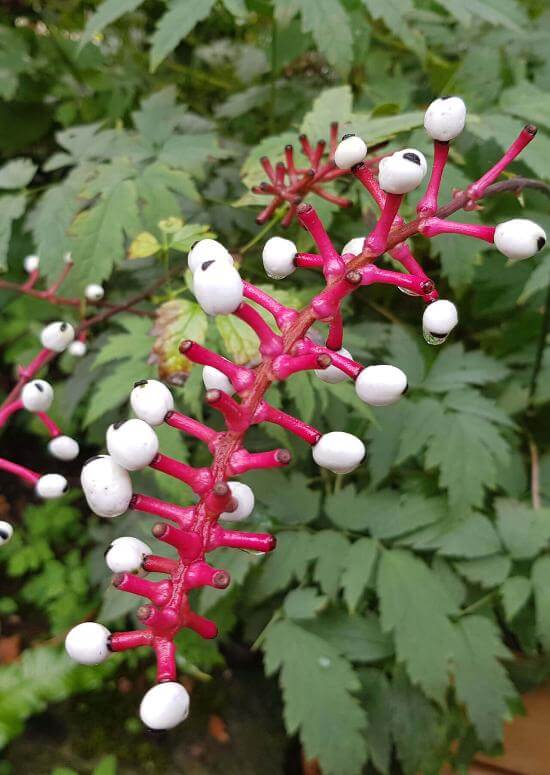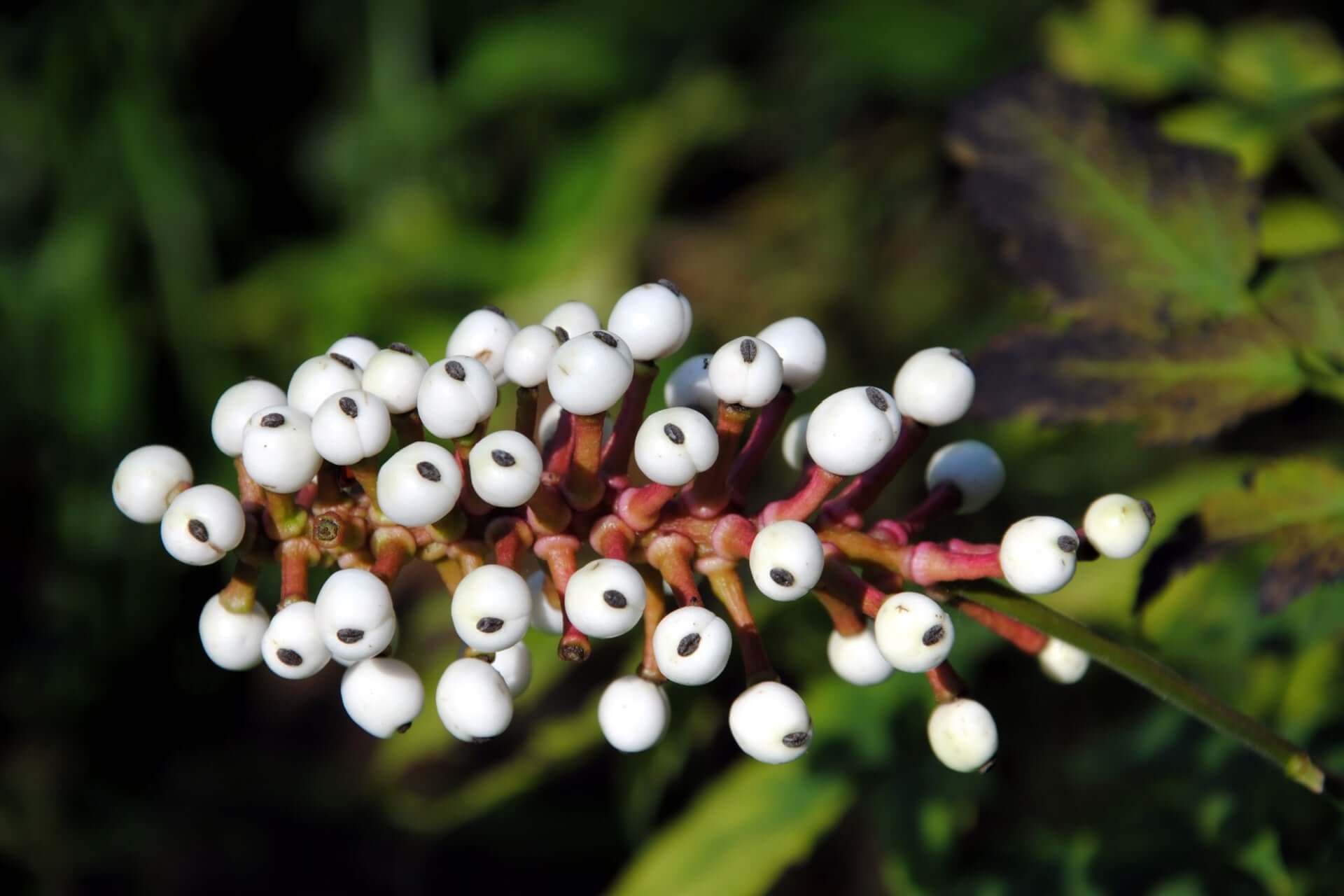Baneberry, expressly White (Actaea pachypoda), referred to as Doll's Eye due to its distinctive and eerie-looking berries, is a fascinating plant for gardeners drawn to native species with unusual appearances. Found primarily in North America, this perennial herbaceous plant thrives in moist, shady woodlands. The berries, emerging in late summer, are white with a black dot, closely resembling a doll's eye, giving it its common name. The plant's intriguing aesthetic and ability to thrive in shady environments make it an eye-catching addition to shade gardens, woodland-themed landscapes, and nature-inspired planting schemes.
Where can I find baneberries?
White Baneberry, or Doll's Eye, is naturally found in eastern North America. It's native to rich, deciduous forests stretching from Canada down to the Appalachian regions and the Midwest of the United States. These plants thrive in the cool, shaded understories of woodlands, often near streams or in damp areas with high organic matter content in the soil. In these natural environments, the plant plays a vital role in the woodland ecosystem, providing food and habitat for various insects and animals.
For gardeners seeking to introduce Baneberry Doll's Eye to their landscape, native plant nurseries are the best source. Many garden centers specializing in native flora carry White Baneberry, as it's prized for its ability to flourish in shaded, damp areas where other plants might struggle. In some cases, conservation organizations or botanical gardens may offer Baneberry as part of native plant restoration efforts, allowing you to plant sustainably and support biodiversity in your garden. Avoid collecting Baneberry from the wild, as its natural populations may be sensitive to over-harvesting.
Is the white Baneberry perennial or annual?
White Baneberry is a perennial plant that will return yearly once established in your garden. Like many woodland perennials, it goes through a period of dormancy during the colder months, only to reemerge with fresh growth in spring. This long-lived plant offers consistent interest throughout the seasons, with its early spring emergence marked by attractive, deeply divided foliage. Delicate white flowers form clusters atop tall, slender stems by late spring and early summer. These flowers may seem subtle, but they are charming and often draw pollinators, including native bees and small insects.
The real show-stopper, however, comes in late summer and early fall when the plant's signature white berries appear. The striking contrast of the white berries with their black "pupil" and the vibrant red stalks on which they rest creates a dramatic focal point in the shade garden. As a perennial, Baneberry will continue to delight gardeners year after year, requiring minimal maintenance once established.

What is Baneberry suitable for?
White Baneberry is most commonly valued for its ornamental appeal. Its unusual berries make it a conversation starter in any garden, especially in naturalistic or woodland settings. Gardeners who are drawn to native plants or who are working to create pollinator-friendly environments appreciate White Baneberry's role in supporting local ecosystems. The flowers of Baneberry attract a variety of pollinators, ensuring a healthy garden ecosystem by supporting beneficial insects.
However, it is essential to note that while Baneberry is visually striking, its berries are toxic to humans if ingested. This makes it an ideal garden plant where no young children or pets might be tempted to sample its fruit. While poisonous to humans, the berries are not dangerous to all wildlife. Certain bird species feed on the berries and play a key role in dispersing the seeds, helping to ensure the plant's continued presence in its native range.
Beyond its ornamental value, Baneberry has a rich history of medicinal use in traditional herbal practices. However, modern gardeners should exercise caution and consult experts before medicinally using any part of the plant. Historically, various parts of the plant were used by Native American tribes to treat ailments such as rheumatism and respiratory issues. However, the plant's toxicity means its use in modern herbal medicine is rare and highly regulated.
Is white Baneberry endangered?
White Baneberry is not currently listed as an endangered species, but like many native woodland plants, its natural habitats are increasingly threatened by habitat destruction, invasive species, and over-collection. The forests and woodlands where Baneberry thrives are often subject to logging, urban expansion, and other forms of land development, which can fragment or destroy the delicate ecosystems these plants rely on.
Baneberry populations may decline in some regions due to these pressures, and conservationists are taking steps to protect their native habitats. Gardeners who wish to cultivate White Baneberry can contribute to its preservation by sourcing plants from reputable nurseries that specialize in native species and by planting in conditions that mimic its natural woodland habitat. By doing so, gardeners help support the biodiversity of native plant populations and can create a sanctuary for this unique plant in their backyards.
Additionally, planting native species like White Baneberry helps promote the health of local ecosystems, as these plants are often better suited to the region's soil, climate, and pollinators than non-native species. In return, they require less maintenance and fewer resources, such as water and fertilizers, making them a sustainable choice for environmentally conscious gardeners.
In conclusion, White Baneberry, or Doll's Eye, is a perennial treasure for shade gardeners looking to add an element of the extraordinary to their plantings. Its striking berries, delicate flowers, and role in supporting woodland ecosystems make it a valuable addition to native plant gardens. Though its berries are toxic to humans, the plant's allure lies in its ability to bring a sense of mystery and magic to the garden while quietly benefiting the environment. Gardeners preserve a small but significant part of North America's botanical heritage by planting and nurturing Baneberry.


